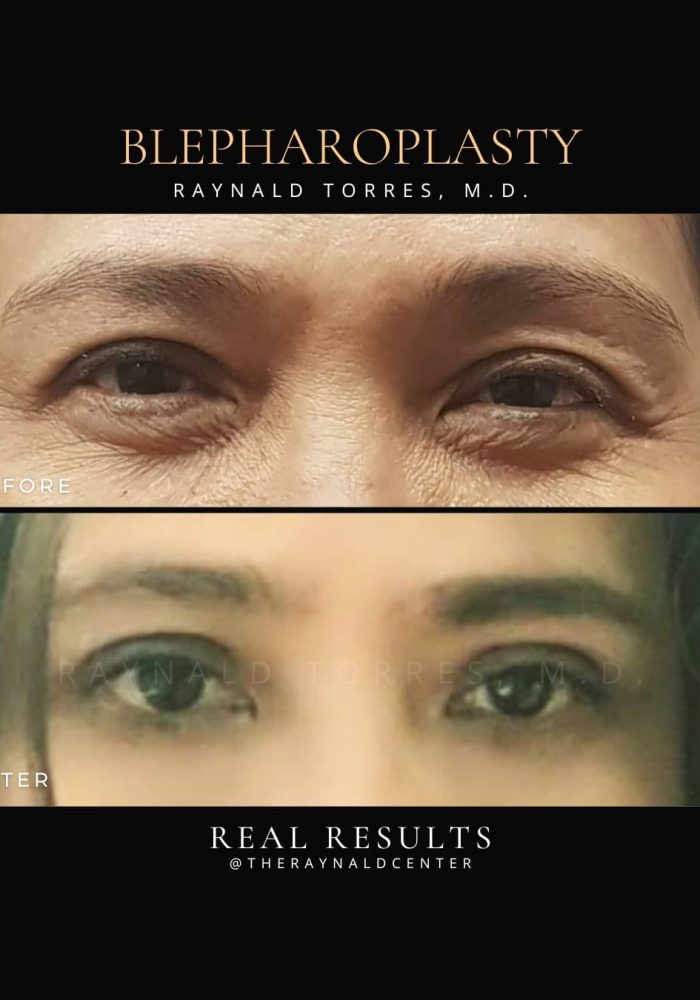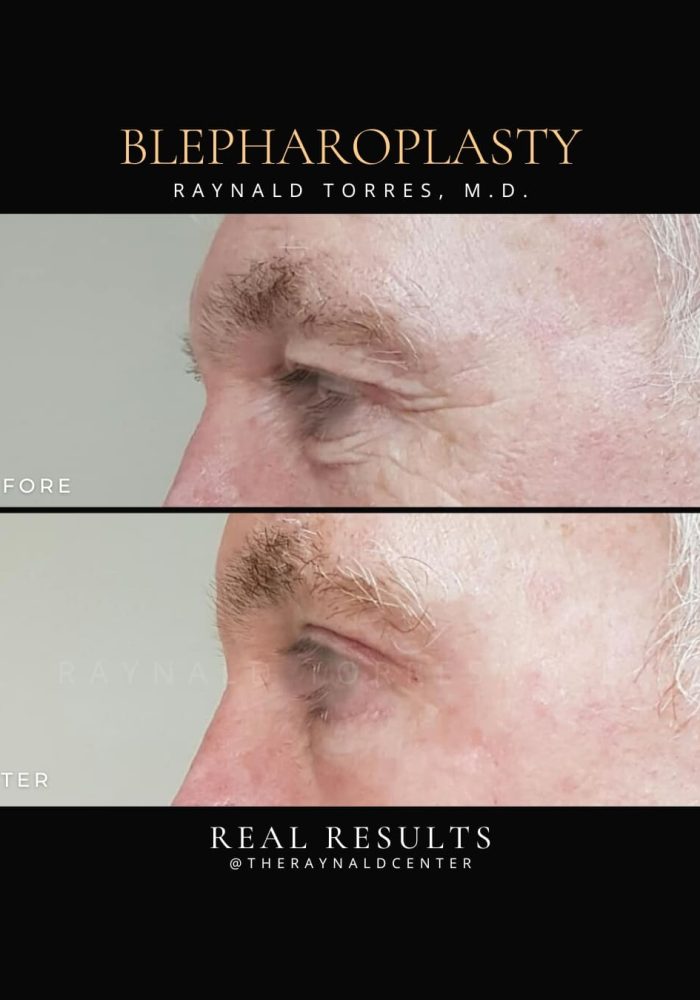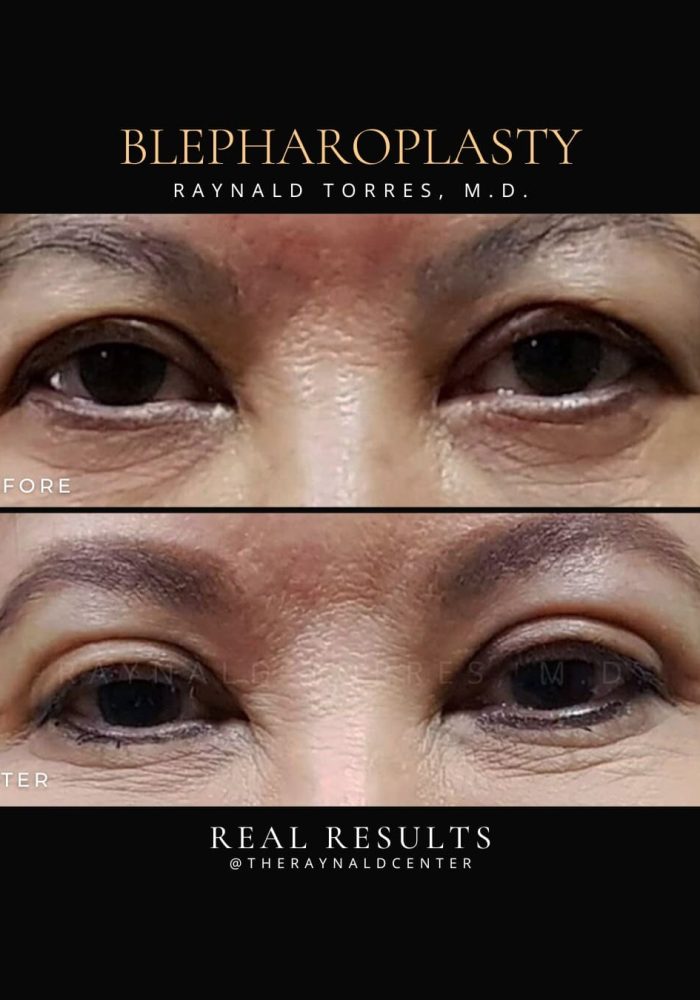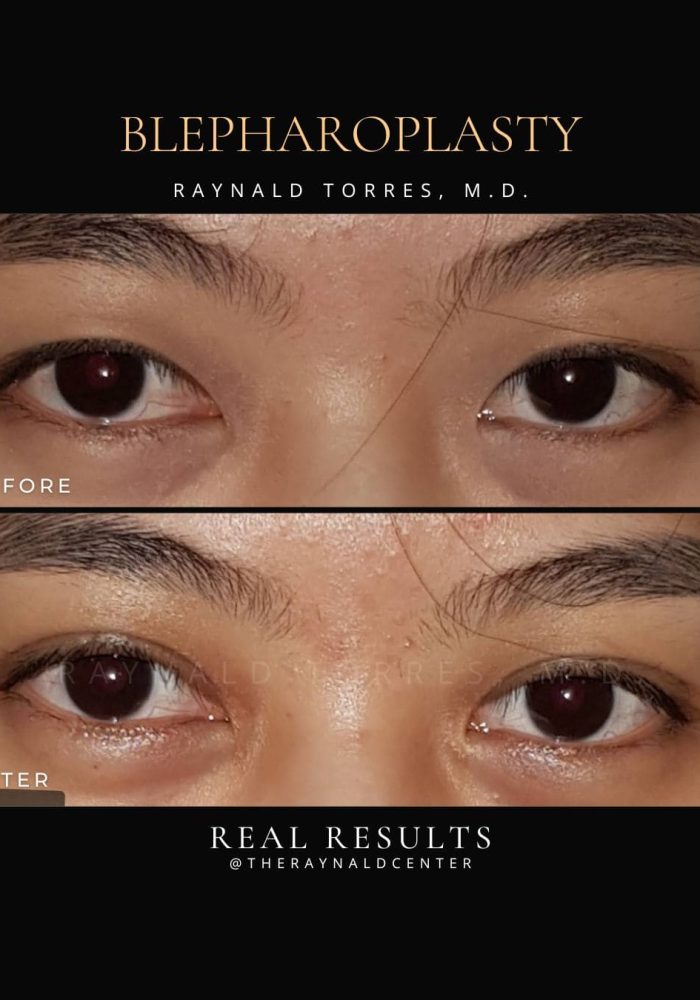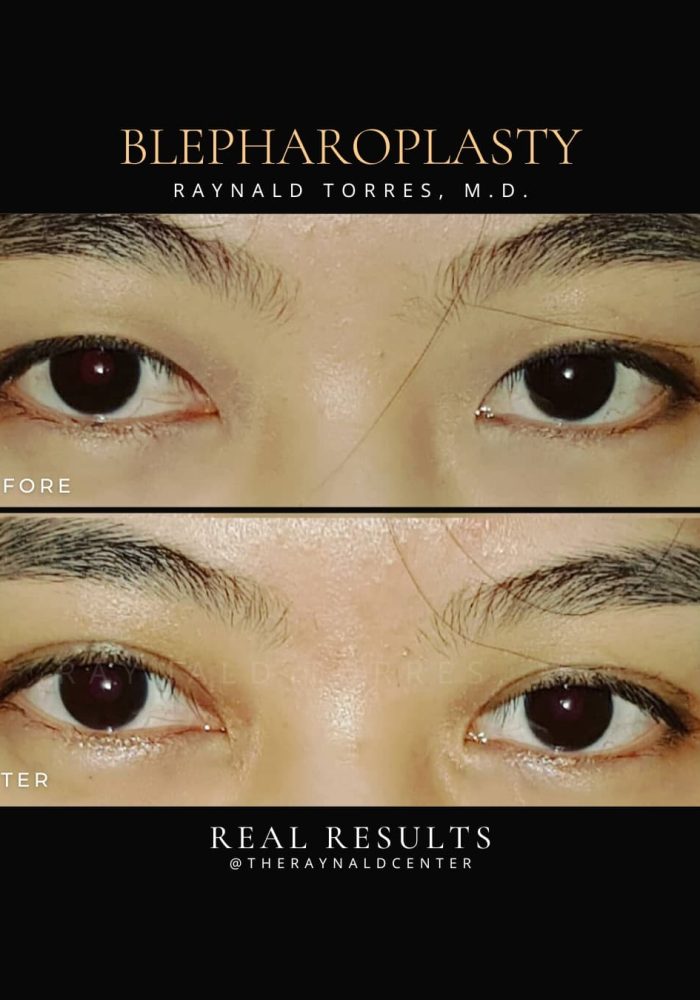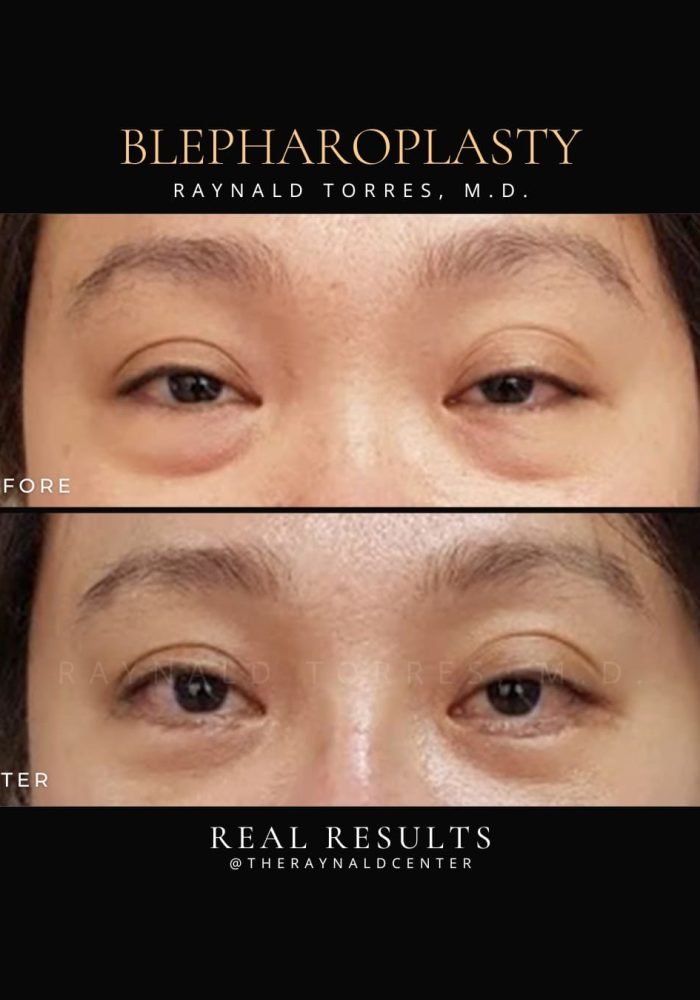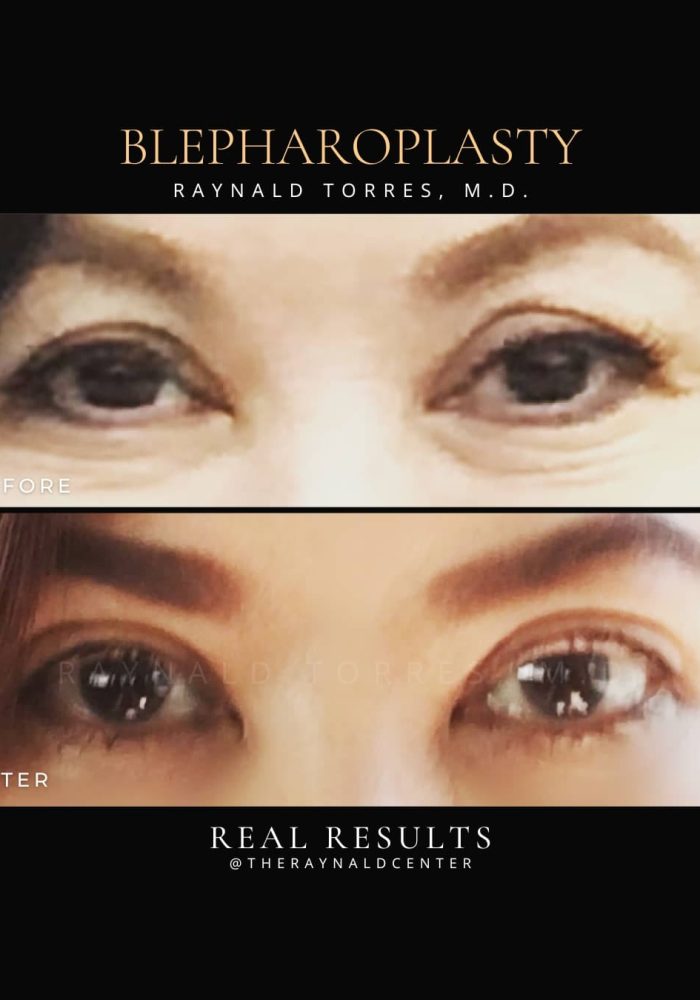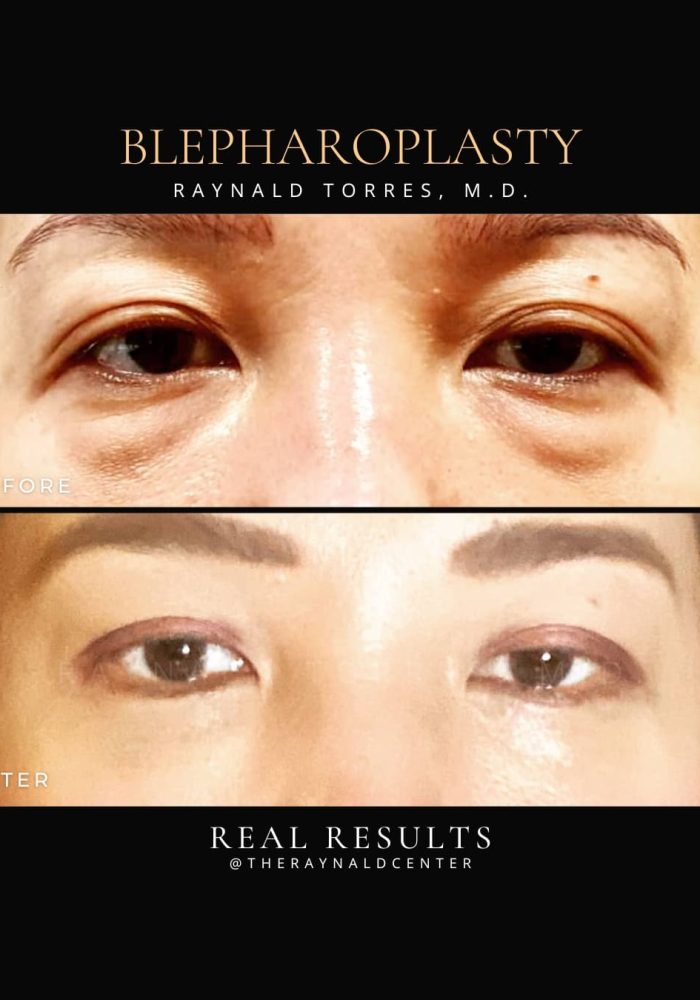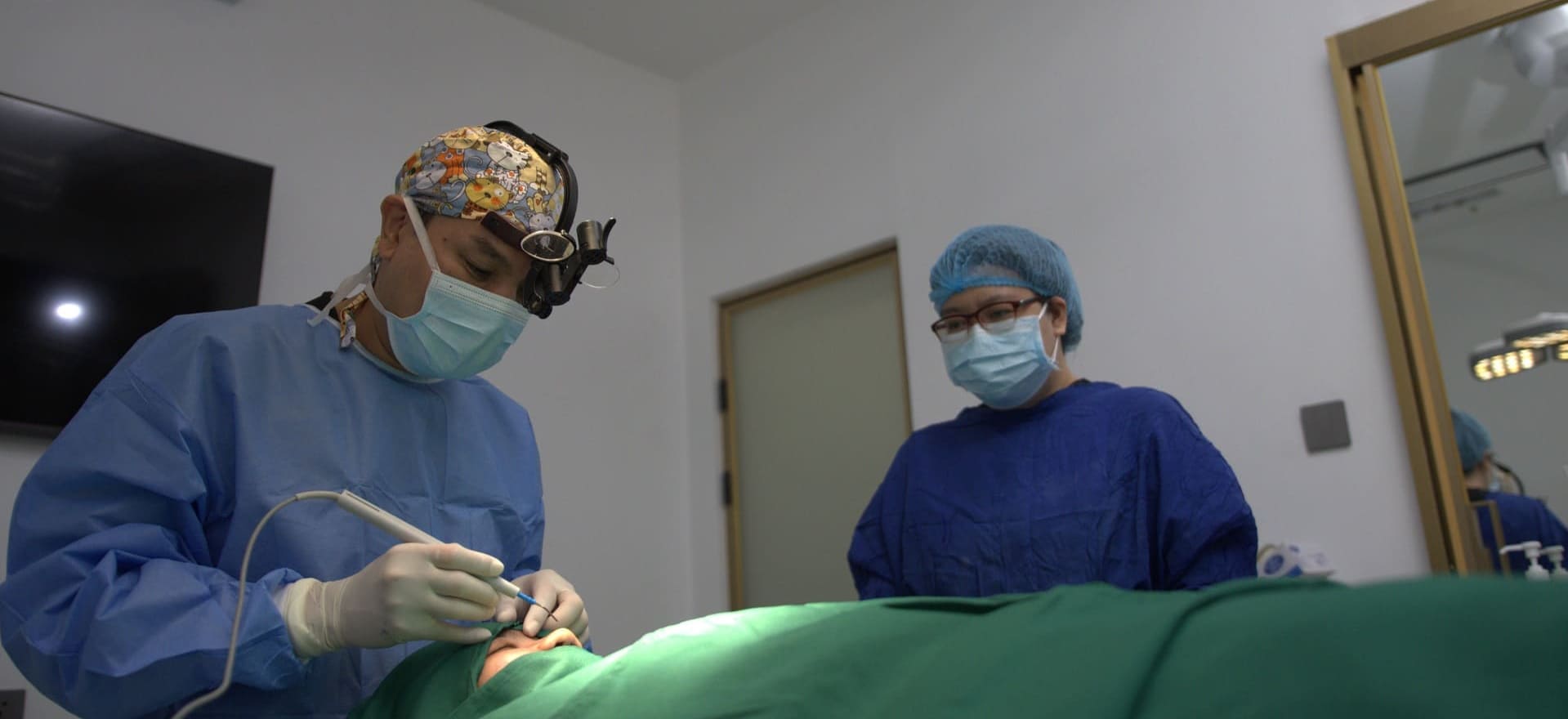
Blepharoplasty - Upper Eyelid
BEFORE AND AFTER
videos
What is Blepharoplasty?
As we age, the upper eyelids can become heavy, droopy, or puffy due to excess skin, muscle laxity, or fat protrusion. This can make the eyes look tired, older, or even angry — and in some cases, the extra skin may weigh down the eyelids enough to affect your visual field. Upper blepharoplasty, or upper eyelid surgery, is a highly effective procedure that removes excess skin and fat, creating a more refreshed, open-eyed appearance while maintaining the natural shape and expression of your eyes.
My approach to upper blepharoplasty is conservative and precise. I remove just the right amount of skin and fat to restore a more youthful contour without making the eyes look hollow or overdone. The incision is placed discreetly in the natural eyelid crease, and once healed, the scar is nearly invisible. This procedure is often performed under local anesthesia and has a short recovery time, with most patients returning to normal activities within a week.
For some patients, upper blepharoplasty is combined with brow lift procedures or CO2 laser resurfacing for optimal rejuvenation. Whether done alone or in combination, upper eyelid surgery can make a remarkable difference — helping you look rested, alert, and naturally younger, not different.
Frequently Asked Questions – Upper Blepharoplasty
What does upper blepharoplasty treat?
It addresses excess skin, fat bulging, and eyelid heaviness that contribute to a tired or aged look. It can also improve vision if drooping skin interferes with your line of sight.
Will I still look like myself after surgery?
Absolutely. My goal is to preserve your natural eye shape and expression while simply removing what weighs the eyes down. The result is a refreshed, youthful version of you, not a different face.
Is the scar visible?
The incision is made in the natural crease of the upper eyelid, so once healed, the scar is very discreet or virtually invisible.
Can this be done under local anesthesia?
Yes. Upper blepharoplasty is commonly performed under local anesthesia with light sedation, making it a safe and comfortable outpatient procedure.
How long is the recovery time?
Most patients experience some swelling and bruising for about 5 to 7 days. Stitches are usually removed by day 5, and most people are ready to return to work or social activities after a week.
Will it help with hooded eyes or asymmetry?
Yes. The procedure can correct hooded eyelids and improve asymmetry, creating a more balanced and youthful look.
Can upper and lower blepharoplasty be done together?
Yes, they are often performed at the same time for a complete periorbital rejuvenation. This combination addresses both upper heaviness and lower eye bags in one session with a single recovery period.
Pre-Procedure Guidelines
To ensure a safe and smooth surgical experience, please carefully follow these instructions before your upper eyelid blepharoplasty:
1. Medical Preparation
Attend your scheduled pre-operative consultation and complete all necessary medical clearance or lab tests.
Inform your surgeon of any medical conditions, allergies, current medications, or previous eye surgeries or treatments.
2. Medication Guidelines
Discontinue blood-thinning medications (such as aspirin, ibuprofen, vitamin E, or herbal supplements) at least 7–10 days before surgery, unless instructed otherwise.
Continue taking maintenance medications for chronic conditions (e.g., hypertension, diabetes) only if approved by your doctor.
Do not take any unprescribed supplements or over-the-counter drugs before surgery without notifying your surgeon.
3. Smoking & Alcohol
Stop smoking at least 2 weeks before surgery to promote proper healing.
Avoid alcohol consumption for at least 48 hours prior to the procedure.
4. Fasting Instructions
If your procedure involves sedation, do not eat or drink anything after midnight the night before surgery unless otherwise instructed.
5. What to Bring & Prepare
Have the following ready before your surgery:
Cold and warm compress bags
Distilled water for wound cleaning
Cotton balls or cotton buds
Eye drops (optional, e.g., Tears Naturale, Genteal, Eyemo, or contact lens lubricants)
Extra pillows for head elevation during sleep
A responsible companion to accompany you home
6. Day of Surgery
Wear loose, comfortable clothing that opens in the front.
Do not wear any makeup, false eyelashes, contact lenses, or jewelry.
Arrive on time and in a well-rested state
Post Procedure Guidelines
Following upper eyelid surgery, proper care is essential to support healing, reduce swelling, and avoid complications. Please follow these instructions carefully:
1. Swelling & Compress Therapy
Cold compress: Apply a cold compress over the eyes for the first 48 hours (2 days) to reduce swelling and bruising. Use for 20–30 minutes, 3 times a day or more frequently as needed.
Warm compress: Begin warm compress therapy after 48 hours to promote blood flow and healing. Apply for 20–30 minutes, 3 times a day, or more often if required.
2. Wound Care
Clean the incision area gently twice a day using distilled water and a cotton swab.
Keep the wound clean and dry at all times. Do not apply ointments or makeup unless prescribed by your doctor.
3. Medications & Eye Care
Take all prescribed medications exactly as instructed in your post-op kit.
Use lubricating eye drops (optional) to relieve dryness or discomfort if recommended.
Do not take any additional medication or apply products to the eye area unless prescribed.
Continue taking your maintenance medications unless advised otherwise by your physician.
4. Sleep & Recovery
Sleep with your head elevated above your chest for the first 7 days using two or more pillows to reduce swelling.
Rest as needed but take light walks around the house to support circulation.
5. Lifestyle Restrictions
Avoid smoking and alcohol for at least 2 weeks post-surgery, as both can impair healing.
Refrain from heavy lifting, bending, straining, or engaging in sports and exercise for 2 weeks or until cleared by your surgeon.
6. Bruising, Swelling & Expected Symptoms
Mild swelling and bruising around the eyes and cheeks are normal and should improve within 2–3 days, with gradual improvement over the following weeks.
Temporary eye redness may occur and usually resolves within 1 week.
Mild aching or tightness in the eyelid area is normal and can be managed with pain relievers provided.
7. Warning Signs – When to Call the Clinic
Contact the clinic immediately if you experience:
Persistent or worsening swelling or bruising not relieved by cold compress or medication
Heavy, dull, or pressing eye pain
Sudden vision changes
Foul-smelling or discolored discharge from the incision
Fever or signs of infectio

